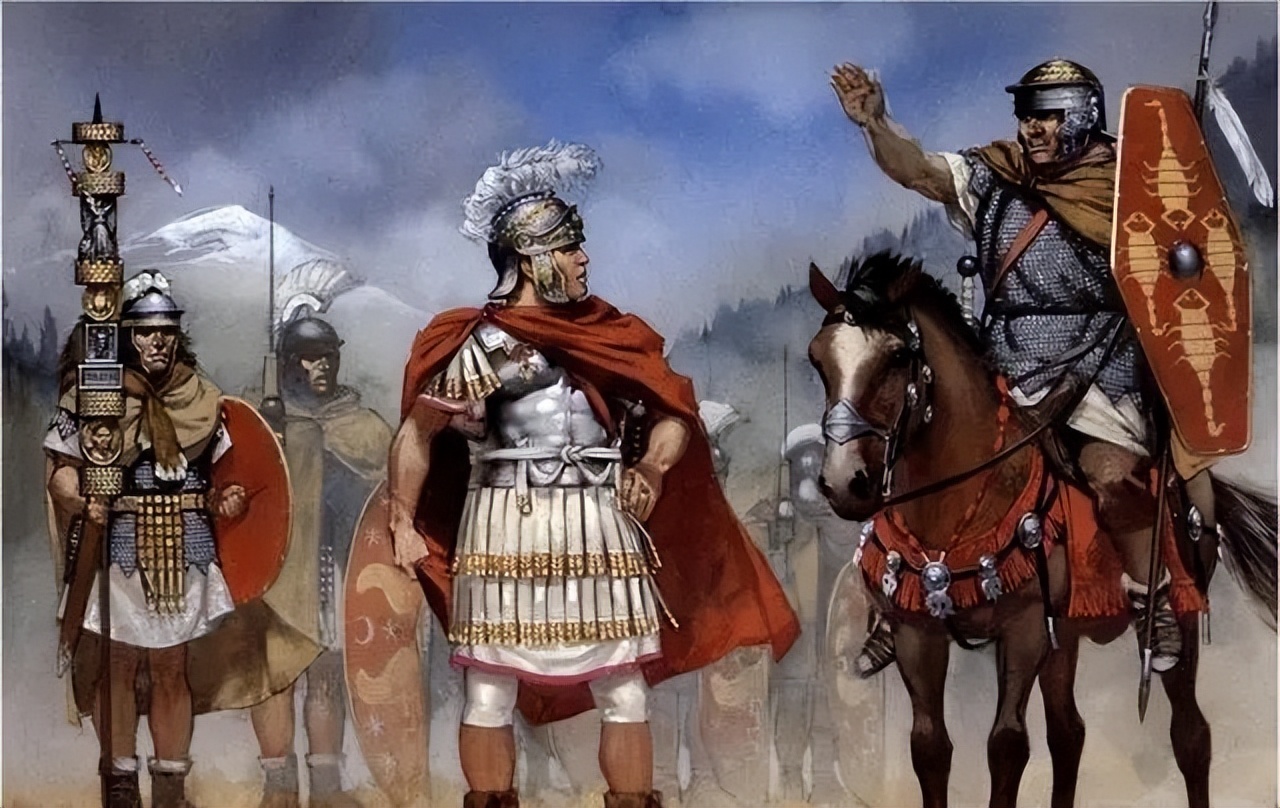By 162 AD, the Roman Emperor sent an army to the east to fight against the Parthians, and in 165, the Roman army occupied Mesopotamia at this time the east began to cause famine, and the plague also spread on a large scale, and the Romans had to conclude a peace treaty with the Parthians and withdraw the army to Rome, but the army had been infected with the plague, causing the spread of plague in the western part of the empire to reduce the population and cause the Roman Empire to have a serious financial crisis.
At this time, the Germans on the Danube border began a large-scale invasion of Rome. The Romans struggled to bring the barbarians back to the border, and the invaders were placed in an upward strip of the Roman frontier, and some of the captives were moved to Roman soil as slave armies.
In 277 AD, Rome suffered an unprecedented crisis, and the scale of barbarian invasions was even greater, so at this time Probus recruited captured Franks and Alemannians into the army, and also placed a large number of barbarian immigrants on the border, but these people were not accustomed to farming, were not willing to be bound by the Roman Empire, and often became the source of rebellion in the Roman Empire.
After the fourth century AD, barbarian invasions were more numerous and larger than before. Although many Roman emperors were able to strike at invaders at this time, they also had to allow some of them to live on Roman territory.
In 374 AD, the Huns crossed the Don River and defeated the Ostrogoths in the Black Sea basin. In 375 AD, the Huns fought with the Visigoths and a large number of Visigoths fled to the territory of the Eastern Roman Empire.
According to the roman empire, the Visigoths who entered The territory of Rome had to be disarmed, but many of them carried weapons with them in secret, and at first these Goths were at peace with the Romans, and as the Oppression of these people in the Roman Empire increased, these people revolted in Rome, defeated the Roman army, and even killed the Roman emperor.
At this time, Rome's traditional policy of barbarism was a complete failure, and the Goths gained control over Roman territory and territory in the north of the Eastern Roman Empire.
In 451 AD, a well-known barbarian leader appeared, and he was the famous Hun king Attila. Attila led 500,000 Hun cavalry through Europe to the Rhine.
The Western Roman Empire named Aetius led by the Franks, the Gothic Burgundians composed of barbarian armies, united with the visigothic king's army to meet Attila, which is the famous Hundred Tribes War in European history Because the officers and soldiers on both sides of the war were barbarians, this is also a typical example of using barbarians to fight barbarians, under the blow of the coalition army, Attila was forced to retreat to the right bank of the Rhine.
A year later, Attila crossed the Alps and invaded the Italian army under the city of Rome, and the Roman Empire withdrew Attila's army through heavy bribes. At this time, Rome had no defensive power, and in 455 AD, the Vandals captured the city of Rome, looted it for 14 days, and destroyed a large number of cultural and artistic treasures, and the Western Roman Empire survived in name only.
In 476 AD, the Commander of the Roman Army, the Germanic Odoac, rebelled and overthrew the last Emperor of the Western Roman Empire, leading to the fall of the Western Roman Empire.
Modern society is a civilized society, and genocide is an atrocity. But during the Western Roman Empire, there was no modern concept of state and nation. The rulers of the Roman Empire, for the convenience of their rule and personal interests, allowed foreign peoples to enter the interior, rather than treating other peoples in the form of ploughing and sweeping, and this way of ruling eventually gave the Western Roman Empire a bad taste.
